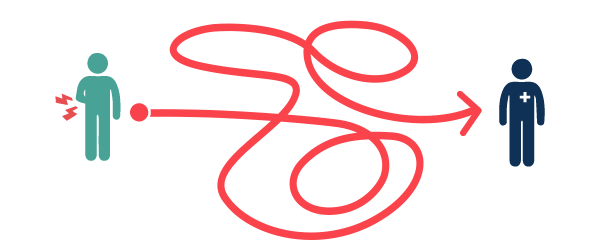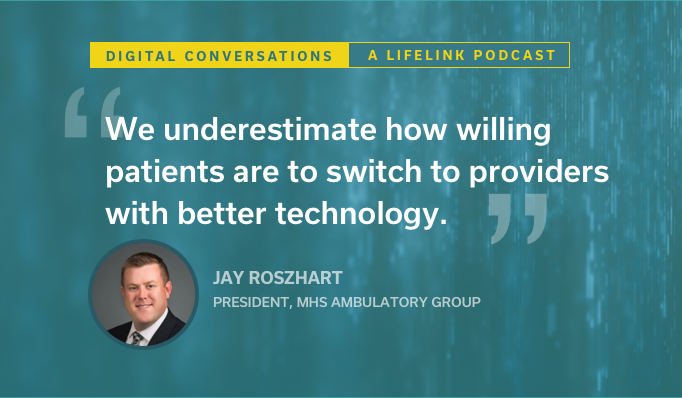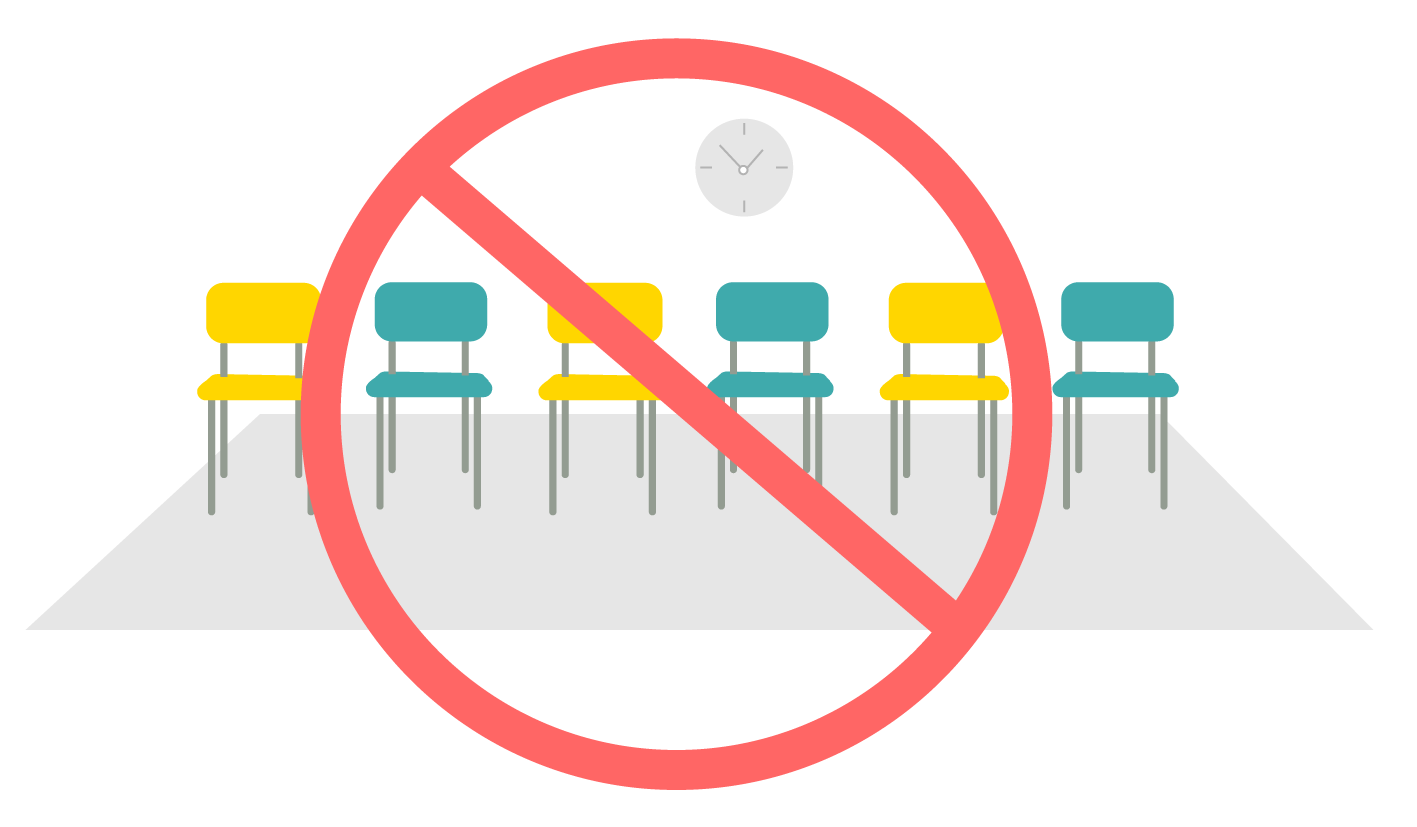A recent Chilmark study found that just 0.7% of patients with a portal account actually interacted with their health record data using their phones. In other words, no patients are using their mobile phones to interact with EMR technology. Nobody.
This is a big deal because with each passing day, more patients are relying on mobile devices to get through daily life. One study found that Americans check their phone on average once every 12 minutes — burying their heads in their phones 80 times a day. People spend a lot of time on mobile apps, yet medical app engagement ranks near the bottom of mobile app market share rankings. Healthcare has not yet figured out the right mobile patient engagement strategy.
Patient engagement and mobile technology go hand in hand. It’s the future. But realizing the potential of mobile patient engagement will require a new class of innovation — one that eliminates the hurdles associated with getting people to download and use apps.
Say Goodbye to the Manila Folder Wall
Billions of dollars have been spent digitizing health records over the past few decades. Converting all of those color-coded manila folder walls to digital records is a great thing for the industry, despite the adoption challenges that persist. There is still a lot of work to do, but there’s no going back to the days of paper, staples, envelopes, and couriers.
Establishing robust systems of record as the home for all patient data not only saves money and time — it sets the foundation for innovation breakthroughs across the healthcare spectrum. We are just beginning to see the benefits. Lab results can be transmitted digitally, clinical teams can instantly pull up a patient’s complete history of care in a matter of seconds, and health systems are realizing a number of operational benefits from their EMR investments.
One of the assumptions and value cases has always been that EMR systems could be “opened” up to the patients so they could access their health information and manage their care online. Patient portals were created, mobile apps were launched, and hospitals were ready for patients to start logging in and taking charge of their healthcare.
Unfortunately, things haven’t quite worked out as planned on the patient-facing dimension of EMR systems. Most estimates peg portal adoption rates below 10%, which is unacceptable.
While systems of record are good at organizing data and connecting with other systems, they were never designed to engage consumers. Conversely, from day one, successful consumer technologies like Amazon and Google were designed to engage millions of individuals, across the full spectrum of demographic profiles. Systems of record and systems of engagement are very different things.
Enterprise systems of record are designed to work quietly behind the scenes, supporting complex operational processes and serving as the single source of data for the wide array of related systems that support different teams and workflows. They have never been good at delivering sweet, simple, consumer-grade experiences. Layer on the complex, regulated healthcare environment and you begin to get a sense of what innovators must deal with.
The Healthcare App Landscape is Like a Dying Shopping Mall
There are more than 300,000 healthcare apps out there. The problem is that patients do not want to download, remember passwords, and learn all of the different apps offered by the array of providers they rely on.
Think about it, there’s a different app for each hospital, lab, pharmacy, specialist, insurance company, and so on. The result? 8 different apps to download, 8 usernames and passwords to remember, 8 new user interfaces to learn. Most would rather just make a call to their provider because that’s the only way they will be able to navigate the complexity with confidence. Just because you build it does not mean they will come.
Overcoming friction is a challenge all technology developers face. When dealing with millions of sick, elderly, and frustrated patients, the challenge becomes significant. But at the same time, healthcare must find a way to leverage modern IT to engage patients because human capacity constraints that the healthcare industry faces are not going away.
There is hope. Technology has evolved significantly since the early days of e-commerce, mobile apps and even social networks. Smartphones are ubiquitous, consumers have comfort executing life transactions on their devices so healthcare needs to find a way to take advantage of what’s happening everywhere else.
Frictionless Conversations through the Digital Agent
Recently, while watching the NFL playoffs, my group of friends wondered where the Titans running back came from. Suddenly, the host muted the TV sound and yelled out “Hey Alexa, when was Derrick Henry drafted?” About two seconds later, the black cylinder object responded “Alabama Running back, Derrick Henry, was drafted by the Tennessee Titans in the second round of the 2016 NFL Draft.” It was cool, it was fast, and it was easy. That’s a frictionless experience!
Web surfing was all the rage in the 1990s. People spent hours digging around this new, intriguing thing called the world wide web. The internet of the 90s was a big library, used mostly as a new toy by fascinated consumers. Business hadn’t figured out how to use it yet. And, you had to be on a PC, plugged into a high speed modem for it to work smoothly.
Now fast forward to 2020 and consumers are asking small, buttonless devices questions and they are getting answers spoken to them. No blue links to click. No web browsers. No churning “processing clock” graphic. Alexa is a form of advanced conversational technology. Voice- and message-based interactions are connecting humans and machines and it’s moving beyond trivia answers into commercial transactions.
Now businesses need to find a way to tap into the promise of conversational technology. It will have a profound impact on healthcare and patient engagement. Smartphones already come with many enabling technologies pre-installed. Voice assistants and mobile Web browsers are fully capable of hosting message-based conversations, which eliminates the app download challenge.
When it comes to messaging-based interaction, conversational technology is maturing rapidly. While voice-based interactions will require more advancements in natural language processing (NLP) in order to be successful in supporting deeper, complex interactions, chatbots that use texting to interact are making their way into the commercial realm today. People know how to text and it’s proving to be sticky and effective at helping people navigate a broad range of commercial transactions, including healthcare.
Natural conversations enabled through messaging don’t require patients to learn new tools.
Natural conversations enabled through messaging don’t require patients to learn new tools. Navigating a patient through a complex prep process for a surgical procedure can be daunting, requiring pages of paper or Web forms to be completed. What happens if a digital assistant talks the patient through that process in a smart, compassionate way? The results have been impressive.
Conversational chatbots are maturing and proving that adoption rates can be well over 50% in challenging environments where complex workflows are improved with simple, interactive digital assistants for patients. Then consider the concept that the same digital assistant is there with a patient, through every step of their healthcare journey and the question shifts from “how do we get more people to use it” to “what else can we do with it” which is the place that every provider needs to get to. That’s the chapter that’s about to be written.







